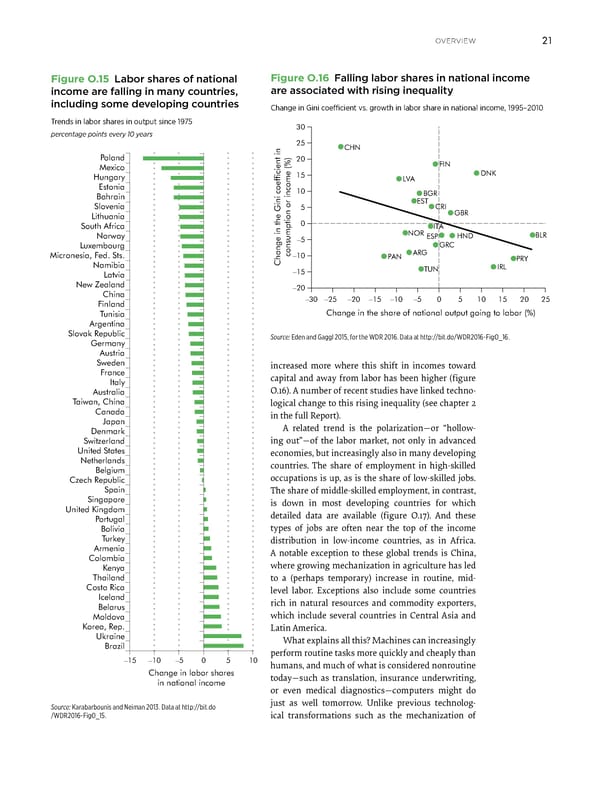overview 21 Figure O.15 Labor shares of national Figure O.16 Falling labor shares in national income income are falling in many countries, are associated with rising inequality including some developing countries Change in Gini coefficient vs. growth in labor share in national income, 1995–2010 Trends in labor shares in output since 1975 30 percentage points every 10 years 25 CHN Poland 20 FIN Mexico DNK Hungary 15 LVA Estonia 10 BGR Bahrain EST Slovenia 5 CRI GBR Lithuania South Africa 0 ITA Norway –5 NOR ESP HND BLR Luxembourg GRC Micronesia, Fed. Sts. consumption or income (%)–10 PAN ARG PRY Namibia Change in the Gini coefficient in TUN IRL Latvia –15 New Zealand –20 China –30–25 –20–15 –10–50510152025 Finland Tunisia Change in the share of national output going to labor (%) Argentina Slovak Republic Source: Eden and Gaggl 2015, for the WDR 2016. Data at http://bit.do/WDR2016-FigO_16. Germany Austria Sweden increased more where this shift in incomes toward France capital and away from labor has been higher (figure Italy O.16). A number of recent studies have linked techno- Australia Taiwan, China logical change to this rising inequality (see chapter 2 Canada in the full Report). Japan A related trend is the polarization—or “hollow- Denmark Switzerland ing out”—of the labor market, not only in advanced United States economies, but increasingly also in many developing Netherlands countries. The share of employment in high-skilled Belgium occupations is up, as is the share of low-skilled jobs. Czech Republic Spain The share of middle-skilled employment, in contrast, Singapore is down in most developing countries for which United Kingdom detailed data are available (figure O.17). And these Portugal Bolivia types of jobs are often near the top of the income Turkey distribution in low-income countries, as in Africa. Armenia A notable exception to these global trends is China, Colombia where growing mechanization in agriculture has led Kenya Thailand to a (perhaps temporary) increase in routine, mid- Costa Rica level labor. Exceptions also include some countries Iceland rich in natural resources and commodity exporters, Belarus which include several countries in Central Asia and Moldova Korea, Rep. Latin America. Ukraine What explains all this? Machines can increasingly Brazil perform routine tasks more quickly and cheaply than –15 –10 –5 0510 humans, and much of what is considered nonroutine Change in labor shares today—such as translation, insurance underwriting, in national income or even medical diagnostics—computers might do Source: Karabarbounis and Neiman 2013. Data at http://bit.do just as well tomorrow. Unlike previous technolog- /WDR2016-FigO_15. ical transformations such as the mechanization of
 World Development Report 2016 Page 34 Page 36
World Development Report 2016 Page 34 Page 36